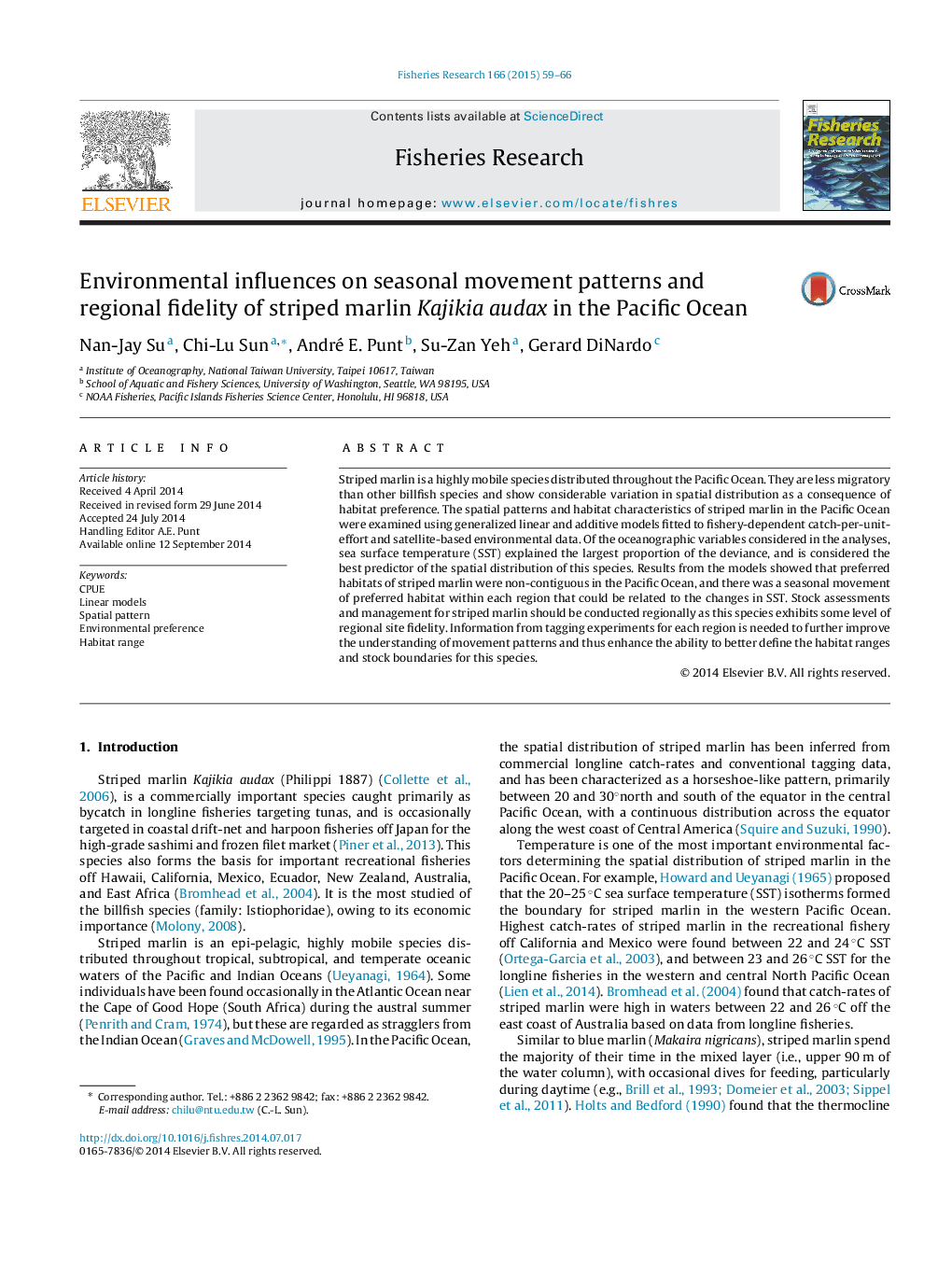| Article ID | Journal | Published Year | Pages | File Type |
|---|---|---|---|---|
| 4542828 | Fisheries Research | 2015 | 8 Pages |
•Preferred habitats of striped marlin were non-contiguous in the Pacific Ocean.•There was a seasonal movement of preferred habitat within several each region.•Sea surface temperature is considered the best predictor of spatial distribution.•Environmental data were first used to better define stocks and boundaries.•Stock assessments and management for this species should be regional.
Striped marlin is a highly mobile species distributed throughout the Pacific Ocean. They are less migratory than other billfish species and show considerable variation in spatial distribution as a consequence of habitat preference. The spatial patterns and habitat characteristics of striped marlin in the Pacific Ocean were examined using generalized linear and additive models fitted to fishery-dependent catch-per-unit-effort and satellite-based environmental data. Of the oceanographic variables considered in the analyses, sea surface temperature (SST) explained the largest proportion of the deviance, and is considered the best predictor of the spatial distribution of this species. Results from the models showed that preferred habitats of striped marlin were non-contiguous in the Pacific Ocean, and there was a seasonal movement of preferred habitat within each region that could be related to the changes in SST. Stock assessments and management for striped marlin should be conducted regionally as this species exhibits some level of regional site fidelity. Information from tagging experiments for each region is needed to further improve the understanding of movement patterns and thus enhance the ability to better define the habitat ranges and stock boundaries for this species.
